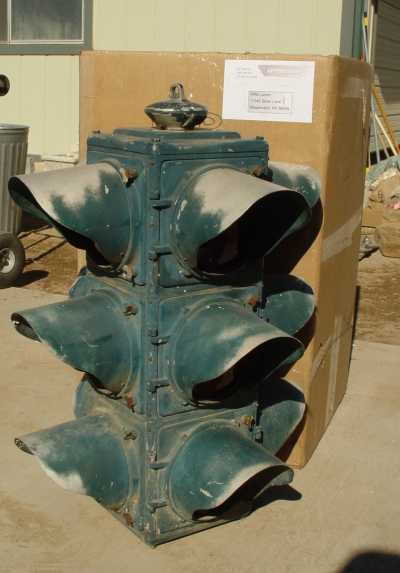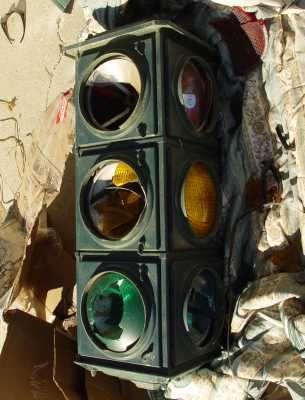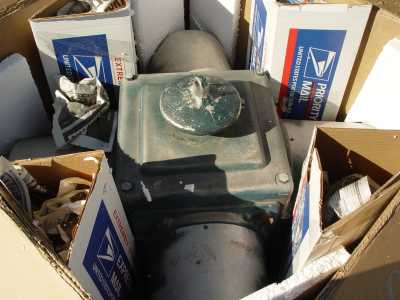Packing a 4-Way Traffic SignalBy Willis LammExample of good packing practices by Ed Tapanes
If the visors and lenses can be removed it is usually safest to remove them, pad the reflectors and ship the light frame in a stout box such as a small refrigerator or water heater box, with two or more layers of styrofoam between the signal and the sides of the box. The visors and lenses can safely be shipped separately. Some signals have cast or riveted visors or the screws are somewhat frozen and difficult to remove. In those instances it may be advisable to ship the signal intact and some basic packing logic is warranted. A good quality and effective packing job can be accomplished using some readily available materials. Materials Needed. To start you will need a stout box sufficient to contain the light when the visors are pointed towards the corners, some cardboard to make triangles, some foam padding for the sides, bottom and top, and some newspaper for stuffing. If the available box is not tall enough, a second box can be inverted over the first to cover the entire signal. With signals such as Crouse-Hinds art decos that don't have flat bottoms, a simple wooden frame placed in the bottom of the box will keep the light balanced upright inside the box. Below is an excellent example of packing done by Ed Tapanes. |
The signal should arrive like this...
|
|
Once a proper box is located the bottom should be lined with a couple of pieces of good foam packing material. Then the light can be placed into the box with the visors pointing towards the corners. There should be room between the visors and the sides of the box to slip some additional hard foam packing strips.
Next, the spaces between the visors can be filled by making cardboard triangles. The triangles can be filled with paper to keep them stiff. (Small components can also be shipped inside the triangles.)
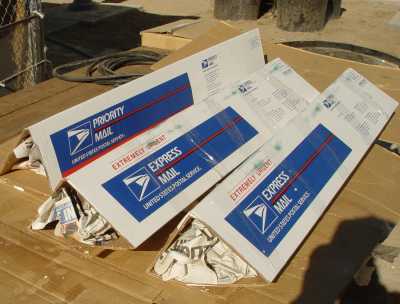
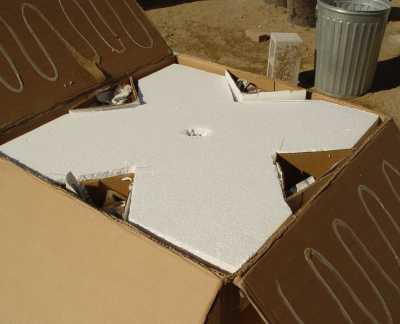
I would recommend both glue and packing tape to seal the box, and clear indications as to which end is up. The end product should be a suitably packed carton that will protect the signal and will also encourage shippers to move it around with a hand truck rather than manhandle it on docks and in and out of trucks.
The "finished product" finally restored. |
